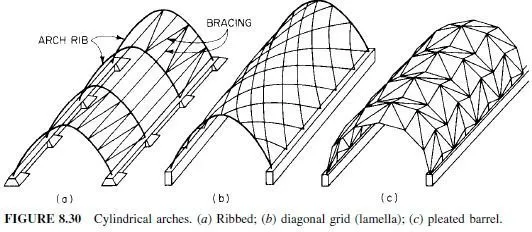results in lighter or shallower members. For example, LRFD will typically result in material savings in the range of 10 to 15% when used for strength design of composite beams. In some cases, the material savings for certain components can be more than 30%. However, when the governing criterion is serviceability, such as deflection or vibration, ASD and LRFD will typically produce the same member sizes. Also, in the case of composite beams and
girders, LRFD will typically require more shear connectors than ASD, thereby offsetting some of the cost savings in material.
A comparison of composite beam and girder sizes obtained from ASD and LRFD for a typical 30-ft by 30-ft interior bay of an office building is shown in Fig. 8.26. A similar comparison for a 30-ft by 45-ft bay is shown in Fig. 8.27. These comparisons were based on the following assumptions:
Beams and girders are ASTM A572, Grade 50, steel.
Floor is 3-in, 20-ga composite metal deck with lightweight concrete fill with a total weight of 47 lb / ft2.
Total dead load (floor slab, partitions, ceiling, and mechanical) is 77 lb / ft2.
Live load is 80 lb / ft2, with live-load reductions in accordance with size of loaded areas supported (Art. 6.4.3).
Dead-load deflections are minimized by temporary shoring or cambering.
Live-load deflections are limited to 1â„360 of the span.



